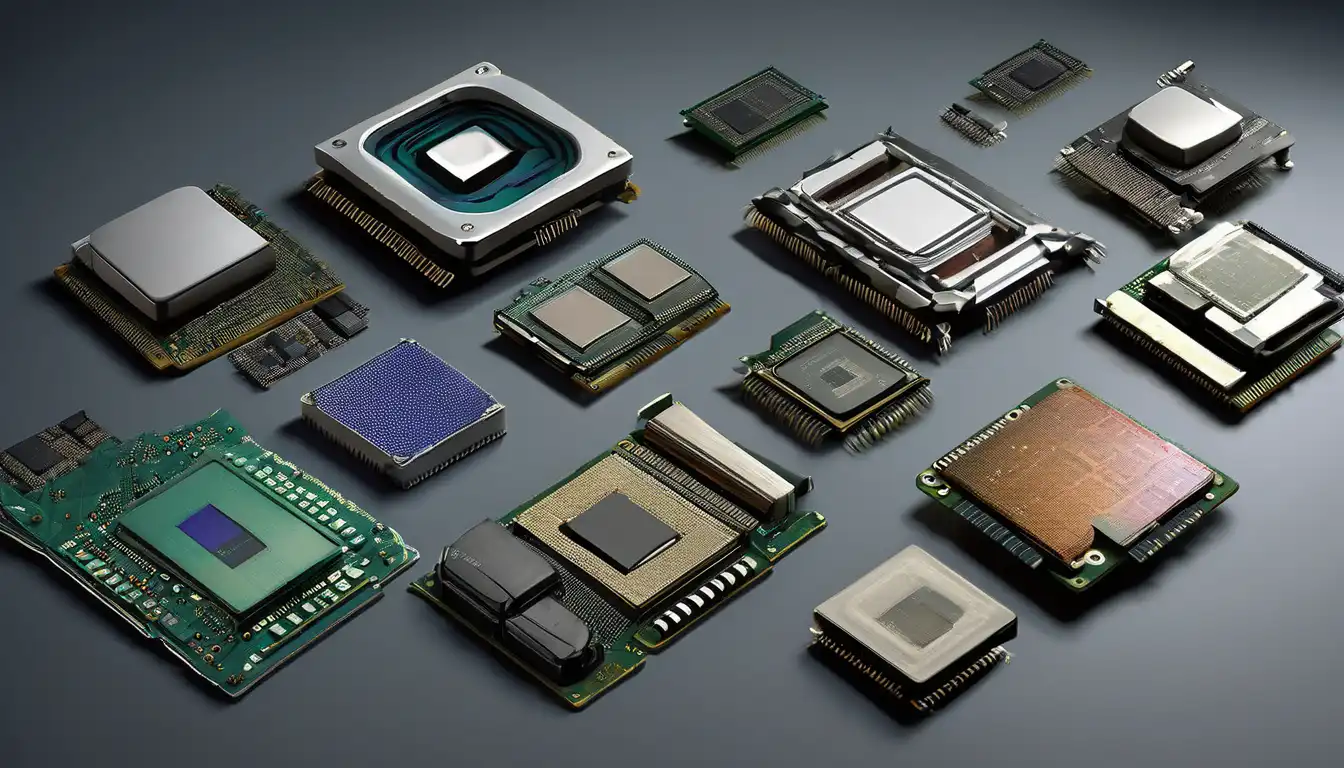The Dawn of Computing: Early Processor Technologies
The evolution of computer processors represents one of the most remarkable technological journeys in human history. Beginning with primitive vacuum tube systems in the 1940s, processors have undergone revolutionary transformations that have fundamentally changed how we live, work, and communicate. The first electronic computers, such as ENIAC, utilized thousands of vacuum tubes that consumed enormous amounts of power and required constant maintenance. These early processors operated at speeds measured in kilohertz and occupied entire rooms, yet they laid the foundation for the digital revolution that would follow.
The Transistor Revolution: 1950s-1960s
The invention of the transistor in 1947 marked a pivotal moment in processor evolution. By replacing bulky vacuum tubes with smaller, more reliable semiconductor devices, computers became more practical and accessible. The 1950s saw the development of the first transistor-based computers, which were significantly smaller, more energy-efficient, and more reliable than their vacuum tube predecessors. Throughout the 1960s, integrated circuits emerged, allowing multiple transistors to be fabricated on a single silicon chip. This breakthrough paved the way for the development of the first microprocessors and set the stage for the personal computing revolution.
The Microprocessor Era Begins: 1970s-1980s
The 1970s witnessed the birth of the modern microprocessor with Intel's introduction of the 4004 processor in 1971. This 4-bit processor contained 2,300 transistors and operated at 740 kHz, representing a monumental achievement in miniaturization. The subsequent release of the 8-bit Intel 8080 and Motorola 6800 processors enabled the development of the first personal computers. The late 1970s and early 1980s saw the rise of iconic processors like the Zilog Z80 and Intel's 8086/8088, which powered early IBM PCs and established the x86 architecture that would dominate personal computing for decades.
Key Developments in the Microprocessor Revolution
- 1971: Intel 4004 - The first commercially available microprocessor
- 1974: Intel 8080 - Established as the standard for early microcomputers
- 1978: Intel 8086 - Introduced the x86 architecture
- 1982: Intel 80286 - Brought protected mode and virtual memory
- 1985: Intel 80386 - First 32-bit x86 processor
The Performance Explosion: 1990s-2000s
The 1990s marked an era of unprecedented performance growth in processor technology. The introduction of RISC (Reduced Instruction Set Computing) architectures challenged traditional CISC designs, leading to innovations in both approaches. Intel's Pentium processor, launched in 1993, brought superscalar architecture to mainstream computing, allowing multiple instructions to be executed simultaneously. The late 1990s saw the emergence of competition from AMD, which helped drive innovation and lower prices. The turn of the millennium brought multi-core processors, with Intel and AMD introducing dual-core designs that significantly improved performance without increasing clock speeds excessively.
Architectural Innovations That Shaped Modern Computing
Several key architectural advancements defined this period of processor evolution. Out-of-order execution allowed processors to optimize instruction scheduling, while speculative execution enabled better utilization of processor resources. The integration of larger cache memories reduced memory latency, and improved branch prediction algorithms minimized pipeline stalls. These innovations, combined with manufacturing process shrinks that allowed for higher transistor densities, resulted in exponential performance improvements throughout the 1990s and early 2000s.
The Multi-Core Revolution and Beyond: 2000s-Present
As clock speed increases began to hit physical limitations due to power consumption and heat generation, the industry shifted focus to multi-core architectures. This paradigm shift allowed performance scaling through parallelism rather than raw clock speed. The mid-2000s saw the introduction of consumer dual-core processors, followed by quad-core, hexa-core, and eventually processors with dozens of cores. This era also witnessed the rise of specialized processors for specific workloads, including GPUs for parallel processing and AI accelerators for machine learning tasks.
Current Trends in Processor Technology
- Heterogeneous Computing: Combining different types of cores for optimal performance and efficiency
- AI Acceleration: Dedicated hardware for machine learning workloads
- Advanced Manufacturing: Transition to 7nm, 5nm, and smaller process nodes
- Security Features: Hardware-level protection against emerging threats
- Energy Efficiency: Focus on performance per watt for mobile and data center applications
The Future of Processor Technology
Looking ahead, processor evolution continues to accelerate with several emerging technologies poised to shape the next generation of computing. Quantum computing represents a fundamental shift in processing paradigm, while neuromorphic computing aims to mimic the human brain's efficiency. Photonic computing, which uses light instead of electricity, promises dramatically higher speeds and lower power consumption. Meanwhile, traditional semiconductor technology continues to advance with 3D chip stacking, new materials like graphene, and novel transistor designs that push beyond the limitations of current silicon-based technology.
Challenges and Opportunities
The future of processor evolution faces significant challenges, including physical limitations of semiconductor manufacturing, increasing design complexity, and growing concerns about energy consumption. However, these challenges also present opportunities for innovation in areas such as approximate computing, specialized accelerators, and entirely new computing paradigms. As we look toward the next decade of processor development, the focus will likely shift from raw performance to intelligent, efficient, and specialized computing that can adapt to diverse workload requirements.
The evolution of computer processors has been nothing short of extraordinary, transforming from room-sized behemoths to powerful chips smaller than a fingernail. This journey has not only revolutionized computing but has fundamentally changed nearly every aspect of modern society. As processor technology continues to evolve, we can expect even more remarkable advancements that will shape the future of technology and human civilization.
